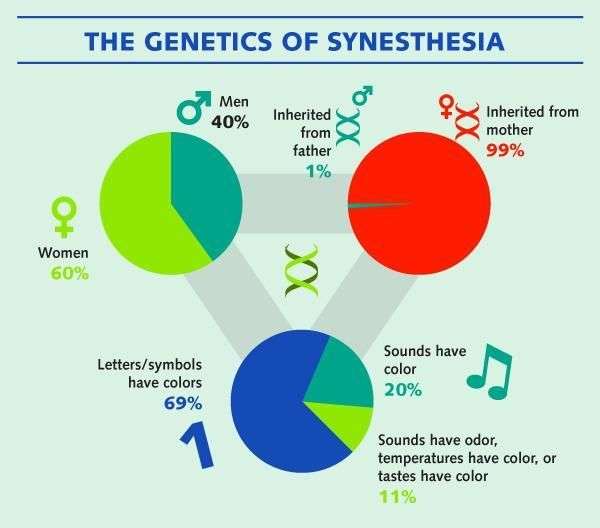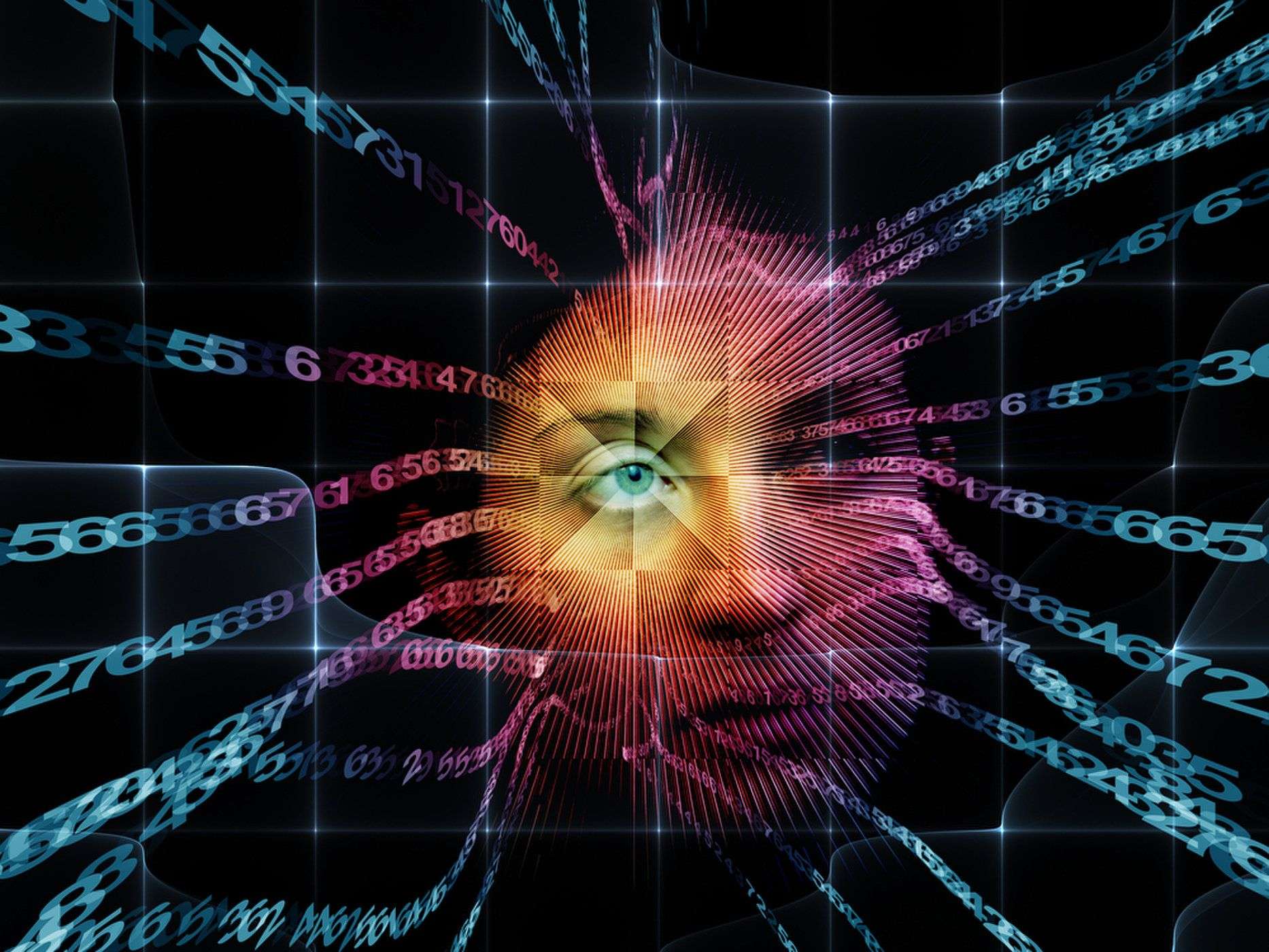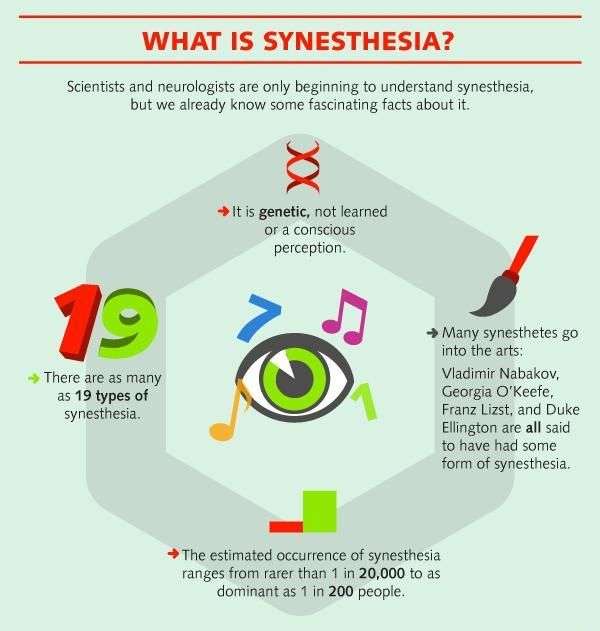Dynamic Connectivity Patterns In Synesthetes
Two more studies have investigated functional connectivity during task performance. In auditory-visual synesthetes, using sounds as stimuli, Neufeld et al. found greater connectivity between parietal regions and primary auditory and visual cortices for synesthetes compared to controls. There was no evidence of greater direct connectivity between auditory and visual regions, suggesting a strong role for intermediate areas such as parietal cortex during synesthetic experience. In Sinke et al. , grapheme-color synesthetes showed greater connectivity between parietal regions and early visual cortex . Together these two studies are in line with the resting state results reported above functional connectivity differences appear to be related to the brain areas that are involved in the specific subtype of synesthesia, with a prominent role for parietal regions. It is important to keep in mind that alterations of functional connectivity can result from either changes in direct physical connectivity or from the alterations in the contribution of the semantic associations.
Brain Function And Structure In Synesthetes
Contrasting synesthetic experience with the absence of such an experience, fMRI studies point to excess activity in brain regions that are involved in the processing of the concurrent synesthetic experience. Examples are activity in cortical area V4/V8 when experiencing synesthetic color , activity in intraparietal sulci for number-form synesthesia , or excess activity in piriform cortex for olfactory synesthetic concurrents . The literature is not very consistent, however: For example, not all studies of grapheme-color synesthesia report activity in color area V4 for synesthesia . One of the most common findings is excess activity in parietal regions for synesthetes, independent of the specific synesthetic subtype . Thus, the results may imply a particularly important role of parietal cortex in mediating phenomenal synesthetic experiences.
Electrophysiological studies have demonstrated abnormal processing of synesthesia-inducing stimuli in early processing phases , over-responsiveness to non-synesthetic parvocellular visual stimuli , and abnormal processing of synesthetic concurrent experiences . Several electrophysiological studies suggest that synesthetic effects can occur very early during the processing of the inducing stimuli . For synesthesias clearly shown to be based on concepts, such as grapheme-color synesthesia, this would imply that semantics already plays a role early during stimulus processing.
Timbre: Harmonic Composition: Overtone
Secondary sensations may also depend upon the mechanical origin of the musical sounds. Specific differences arise according to whether the notes emanate from a single instrument, a small chamber music ensemble, or from a full orchestra. According to Donath , sounds proceeding from a piano, ‘cello, harp, violin, flute and oboe evoked photisms which were violet, orange, wine-red, chrome yellow, blue and olive-green respectively. However, in Myers subject, the colour-linkages were quite different. Thus, a ‘cello, bassoon, horn, trombone, violin, and fife were related in a specific manner to brownish pink, brownish yellow, brownish rose, red, pink merging into blue, pale blue, or green.
In anecdotal vein it can be said that when Liszt was appointed to Weimar as Kapellmeister, he bewildered his players at rehearsals by urging more pink here, if you please or by declaring that is too black or, here I want it all azure.
The same melodic phrase may possess secondary sensations which change according to the key selected by the instrumentalist. That major and minor keys should differ in this context is not surprising. Some have spoken of minor keys being associated with grey or black photisms, major ones being green, blue, pink, or red. To some subjects, major chords are brighter than minor. But to those gifted with a more elaborate faculty of synaesthesia, highly specific differences may result according to the particular key chosen, whether it be major or minor.
Also Check: What Are Norms In Psychological Testing
How Do You Test For Synesthesia
There is no definitive test to determine if someone has synesthesia. But some tests that doctors use include taking a family history, assessing the personâs mental health, and doing an interview about their experiences.
If you think that you may have synesthesia, it is important to consult with a neurologist to get a professional diagnosis.
The Effect Of Tns Synesthesia On Everyday Cognitive Processes

Figure 9.2. Mean reaction times as a function of group, congruency and numerical distance. On the left, the performance of TNS synesthetes. A numerical distance effect has been observed only when the presentation on the computer screen was compatible with their synesthetic experience . Twelve non-synesthetes show a numerical distance effect independent of the presentation of the numbers on the computer screen. Error bars are one standard error of the mean.
Similarly, while it seems that the synesthetes general arithmetic abilities are not different from non-synesthetes, numberspace synesthetes show rigidity that leads to underperformance when the most efficient way to solve an arithmetic problem requires a strategy that is not based on a visuospatial process .
These studies show that having an explicit representation of time, number, and space can provide some benefits as the information is constantly available, but it can also lead to lower behavioral flexibility in solving a task effectively.
Pegah Afra, in, 2015
Don’t Miss: What Is Chemistry In Simple Words
Types Of Synesthesia: Chromesthesia
Chromesthesia is sound-to-colour synesthesia, the kind which most intrigued the artist Wassily Kandinsky, and which many of his paintings attempt to evoke.
Here is one of his paintings, called Yellow, Red and Blue:
People with chromesthesia hear sounds and these automatically and unintentionally make them experience colours.
To someone who doesnt experience this, it sounds weird or distracting, that youd suddenly start seeing colours while listening to music, but to synesthetes who have grown up with this, its just their normal, everyday, experience.
Its no more unsettling than having a particular song remind you of a place you used to live, perhaps less so.
The variety thats been found even within this one type of synesthesia is mind-boggling.
Some of those with chromesthesia find the colours are projected into space in front of them others see it in their minds eye.
Some only get the chromesthesia for spoken words, which are influenced by the voices accent, pitch and intonation others just for music.
Here is a beautiful video that explores the connection between music and colour. The graphics are by motion graphics designer Esteban Diácono, and the music is Slowly by composer Ólafur Arnalds:
Is Synesthesia A Type Of Autism
Its pretty common for people to wonder if synesthesia is a form of autism. Theres some overlap in the way people with the two neurodivergences respond to stimuli.
But autism and synesthesia are two different things. You can have one or both.
But a higher than average number of autistic people do also have synesthesia. A 2020 study showed that among autistic people, that figure may be as high as 20 percent.
You May Like: How Have Hela Cells Contributed To Biology And Medicine
What Kinds Of Synesthesia Are There
Having understood the neurological bases of synaesthetic phenomena, we are more than ready to go into depth on the subject that has brought us together here today. Explore the different types of synesthesia. In this way, we will see how this phenomenon can manifest itself and we will understand much better what it consists of.
Types Of Synesthesia: Misophonia
While many forms of synesthesia are harmless and some consider it enhances their life, not all forms are beneficial.
Misophonia literally hatred of sound is a condition in which sounds trigger strong negative emotions like disgust and anger.
Its extremely rare and may be caused by problematic connections between the auditory cortex and the limbic system.
Commonly reported amongst misophones are strong adverse feelings in response to the sounds of other people eating and breathing.
Recommended Reading: Geometry Dash 800 User Coins Ship
The Different Types Of Synesthesia
Since synesthesia can involve any combination of the senses, there may be as many as 60 to 80 subtypes. However, not all types of synesthesia have been documented or studied, and the cause remains unclear. Some synesthetes perceive texture in response to sight, hear sounds in response to smells, or associate shapes with flavors. Media like books, films, and TV shows often take advantage of the multimodal mental imagery associated with synesthesia .
While nearly any sensory combination is possible in synesthesia, here are some of the most well-known ways it manifests:
Synesthesia Resource Center View These Videos And Visit These Web Sites To Learn More About Synesthesia
Please see the fabulous “Landscapes of Classical Music“by artist Ning Hui Xiong from China
|
Read Patricia Lynne Duffy’s chapter about synesthete-characters in fiction:and has been reproduced by permission ofOxford University Press. For permission to reuse this material, please visitOUP Permissions. |
Edited by and Edward M. Hubbardincluding chapter by Patricia Lynne Duffy
| “Talk and Talk-back” video with director Natasha Lee Martin and Patricia Lynne Duffy following performance of Martin’s at New York Theater Lab |
|
Videos and articles in English |
Videos and articles in other languages |
Recommended Reading: What Does C Mean In Math
The Biological Basis Of Synesthesia
It is unclear which parts of the brain are involved in synesthesia. Richard Cytowic’s research has led him to believe that the limbic system is primarily responsible forsynesthetic experiences. The limbic system includesseveral brain structures primarily responsible for regulating ouremotional responses. Other research, however, has shown significantactivity in the cerebral cortex during synestheticexperiences. In fact, studies have shown a particularly interestingeffect in the cortex: colored-hearing synesthetes have been shown todisplay activity in several areas of the visual cortex when theyhear certain words. In particular, areas of the visual cortexassociated with processing color are activated when the synesthetes hearwords. Non-synesthetes do not show activity in these areas, even whenasked to imagine colors or to associate certain colors with certain words.
Do You Have Synesthesia

Theres no clinical diagnosis for synesthesia, but its possible to take tests such as The Synesthesia Battery that gauge the extent to which one makes associations between senses. To truly have synesthesia, the associations have to be consistent. They should happen every single time one invokes one of the two senses, over a span of time, and be memorable experiences: Letters are associated with the same very specific shade of a color every time theyre read, and sounds always evoke the matching texture, even months later.
Because synesthesia is not widely studied, not all researchers agree on these standards. Some scientists speculate that everyone is born with a degree of synesthesia because the infant’s brain is hyperconnected, and these connections are pruned as it develops. In fact, synesthesia can decrease over time.
Read Also: What Was The Geography Of The Southern Colonies
The Brain Development Theory
The brain development theory suggests that this condition is a result of how some peopleâs brains develop before they are born. In these cases, the person might have been exposed to certain drugs or other environmental factors while in utero.
This could cause their senses to become connected as the neurons cross over from one side of the brain to the other. And this could also explain why some people only experience synesthesia later in life.
Box 1 Remaining Questions
You May Like: Geometry Dash Demon Key Hack
Getting Help For Synesthesia
If you believe that you have synesthesia and its impacting your life, you may find it helpful to speak to a mental health professional. An online counselor can help you understand what youre experiencing and learn to live with your condition or even see it as a superpower! Online counseling is an excellent place to discuss life with synesthesia.
Homer By Henry Jerome Stockard
While silver voices wake the waters oer
Mid asphodels on Anthemusias leas
I hear the Odyssey and Iliad rise
Henry Jerome Stockard uses the color silver to describe a voice. In this instance, the silver voices are waking the water. It makes you think of a voice that is clear and musical like an instrument.
Don’t Miss: Saxon Algebra 2 Scope And Sequence
Is Synesthesia A Bad Thing
Its not uncommon to see synesthesia described as a superpower, and its easy to see why.
Musical geniuses use it in their work. Synesthetes can see a rainbow of colors when they hear music. And who doesnt want to taste ice cream every time you see the color blue?
Studies have also shown that grapheme-color synesthetes in particular can have better memories than the average person, that synesthetes in general can be more imaginative, and even that the study of synesthesia could lead to a better understanding of human consciousness.
But synesthesia isnt all about cool abilities there can be downsides, too. We rounded up some of the pros and cons of synesthesia.
| Pros |
Can You Have Mild Synesthesia Disorder
Yes! Even though this disorder is commonly associated with people who experience vivid sensory combinations all the time, there are many types of milder forms.
For example, some people might experience colors when they hear certain sounds. Others might see numbers in color, but only when they are very focused on the task at hand.
However, it may not meet the diagnostic criteria for a diagnosis because your experiences might be much less pronounced than what another person would experience. But it is still possible to have some benefits from this condition, like enhanced memory skills.
You May Like: What Is The Definition Of Power In Physics
What Is Synesthesia Disorder
Synesthesia is a neurological condition in which the stimulation of one sense leads to an involuntary experience in another. The most common type of synesthesia is when someone sees colors when they hear words. But there are many other types. For example, some people might smell shapes or feel textures based on what they see.
Synesthesia disorder can be as simple as hearing words and seeing colors or more complex such as smelling shapes. It is not clear how common synesthesia disorder is because many synesthetes are unaware they have this condition.
A Home Test You Can Do

Instead of the online assessment, how about carrying out a simple test for synesthesia at home? Its not super official, but it can help you become self-aware about how you take in the world.
You can do the same test when listening to music, highlighting whether notes or instruments have a consistent color in your mind.
Also Check: Geometry Definition Of Acute Angle
What Constitutes Synesthesia And How Does It Relate To Typical Cross
Several authors focus on discussing what synesthesia is and how it relates to typical cross-modal interactions. Mylopoulos and Ro provide a critical review of methods used for understanding and classifying synesthesia and provide a set of markers to aid in distinguishing synesthesia from other psychological phenomena. provide an interesting opinion article on cases that border on traditional forms of synesthesia and discuss whether these forms do or do not constitute forms of synesthesia. Similarly, Deroy and Spence discuss the notion of âinduced synesthesia,â arguing that current attempts to induce synesthesia may not be evidentially linked to developmental synesthesia.
Moos et al. touch on the theme of how synesthesia relates to typical cross-modal interactions, reporting findings on color and texture associations in voice induced synesthesia, suggesting common underlying mechanisms in cross-modal associations between synesthetes and non-synesthetes. Additionally, Rouw et al. examine the relationship between synesthetic and non-synesthetic cross-modal representations by assessing color associations for days and letters across different languages.
Does Sound Have A Flavor It Could Be Synesthesia
- Ph.D., Biomedical Sciences, University of Tennessee at Knoxville
- B.A., Physics and Mathematics, Hastings College
The term “synesthesia” comes from the Greek words syn, which means “together”, and aisthesis, which means “sensation.” Synesthesia is a perception in which stimulating one sensory or cognitive pathway causes experiences in another sense or cognitive pathway. In other words, a sense or concept is connected to a different sense or concept, such as smelling colors or tasting a word. The connection between pathways is involuntary and consistent over time, rather than conscious or arbitrary. So, a person experiencing synesthesia doesn’t think about the connection and always makes the exact same relationship between two sensations or thoughts. Synesthesia is an atypical mode of perception, not a medical condition or neurological abnormality. A person who experiences synthesthesia over a lifetime is called a synesthete.
You May Like: What Is Activation Energy Biology